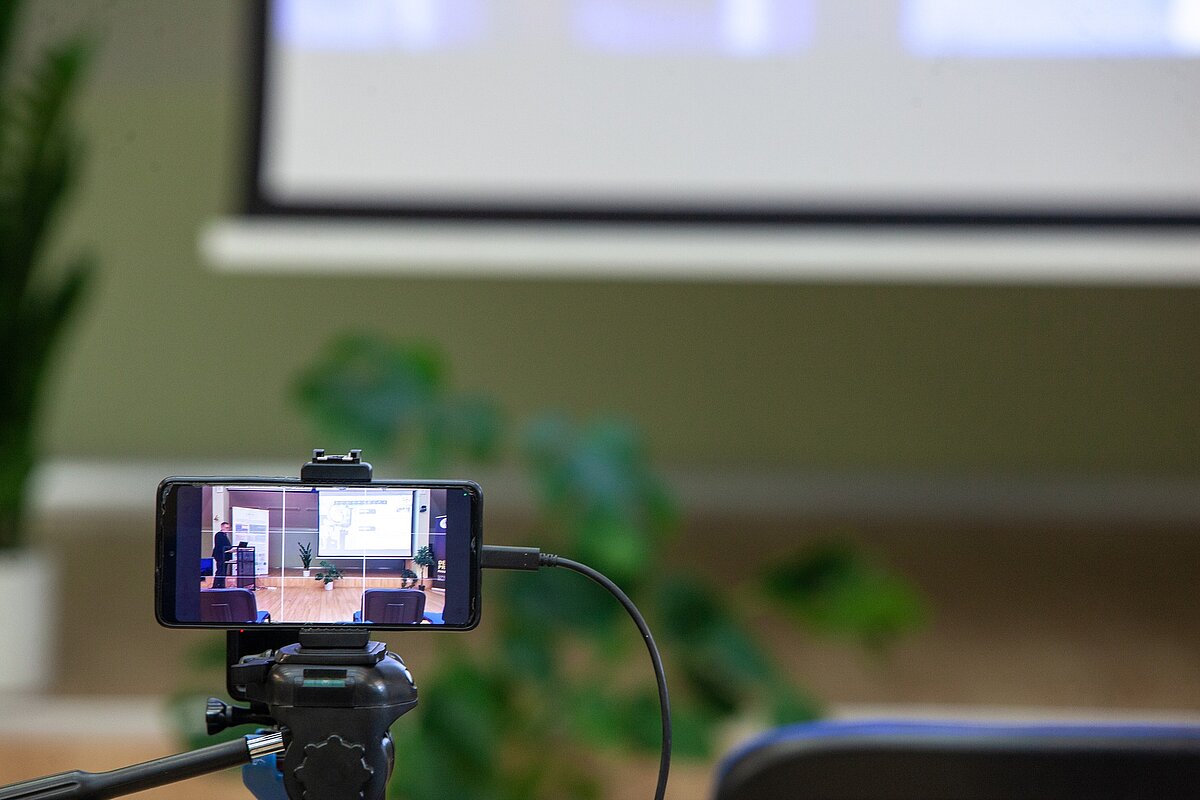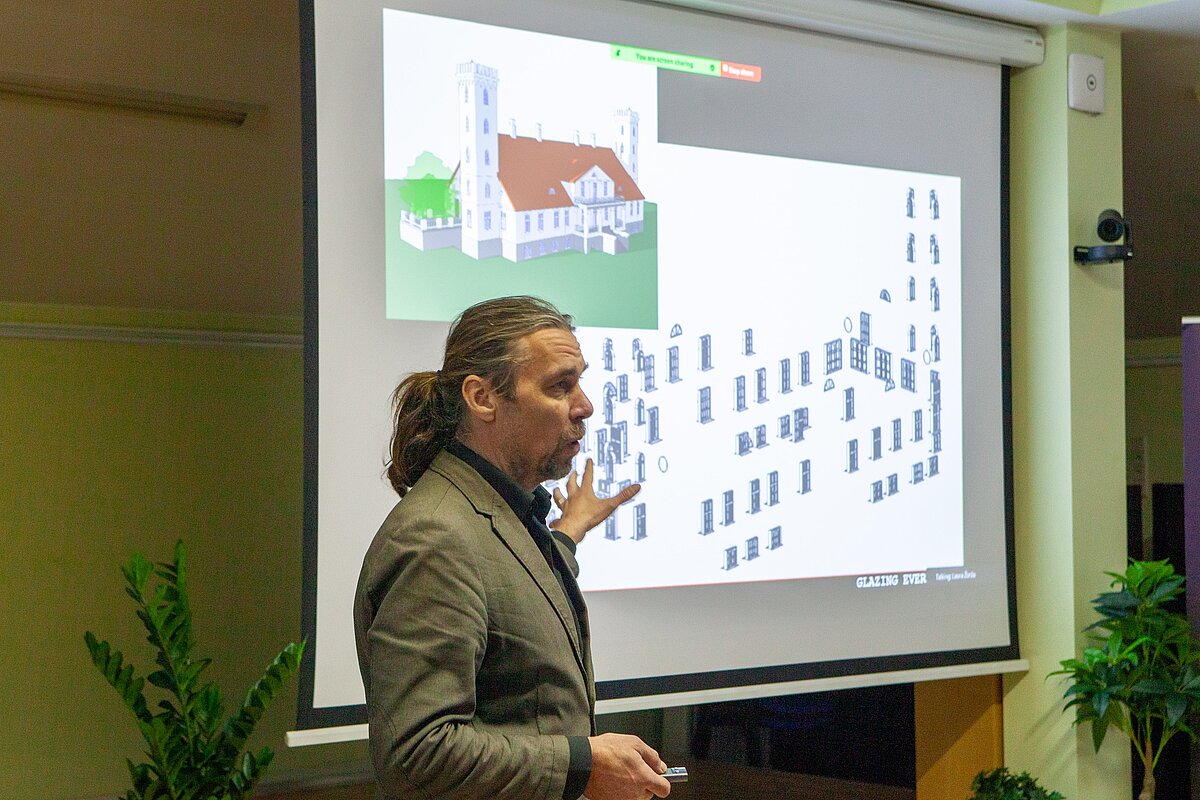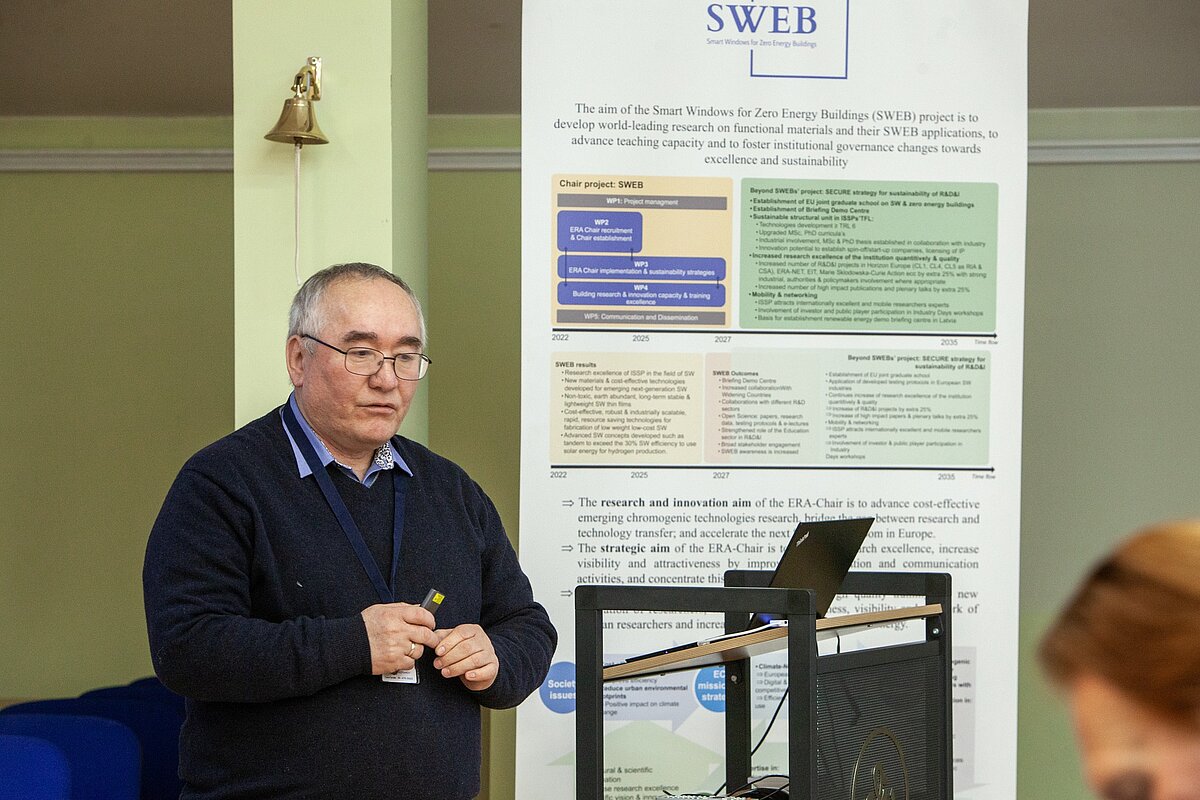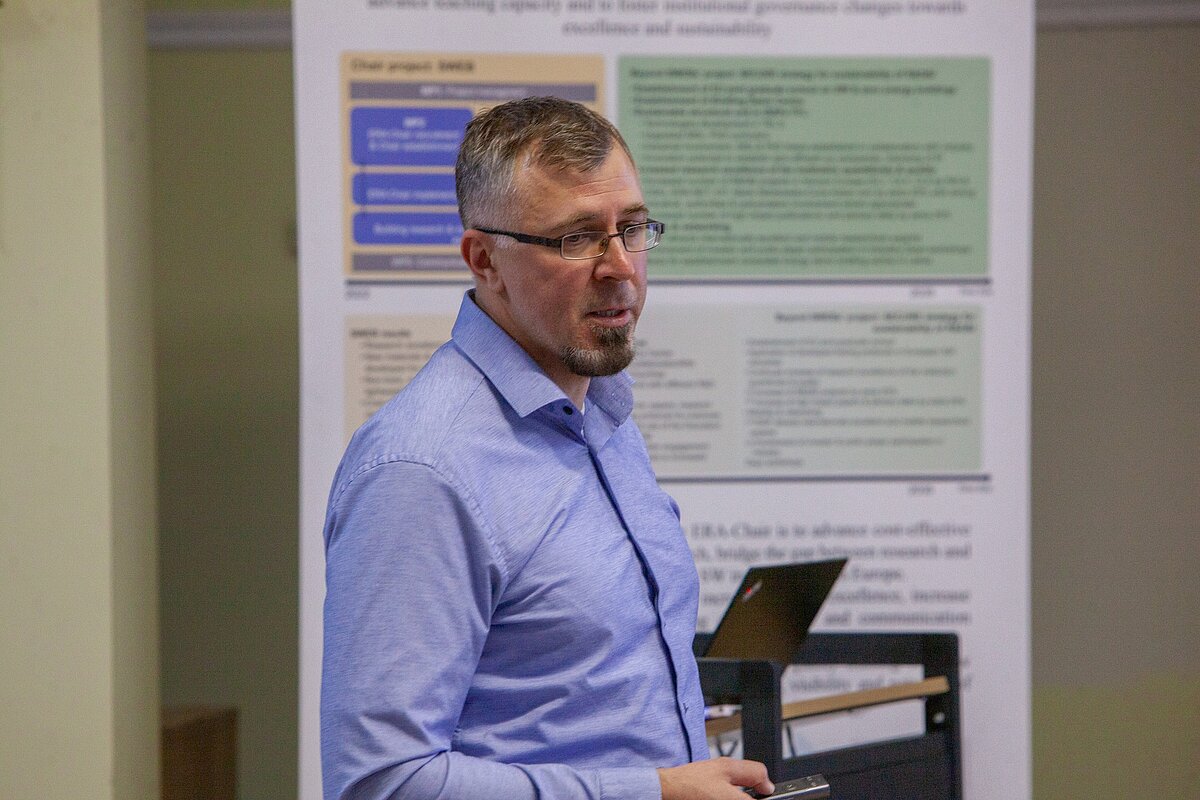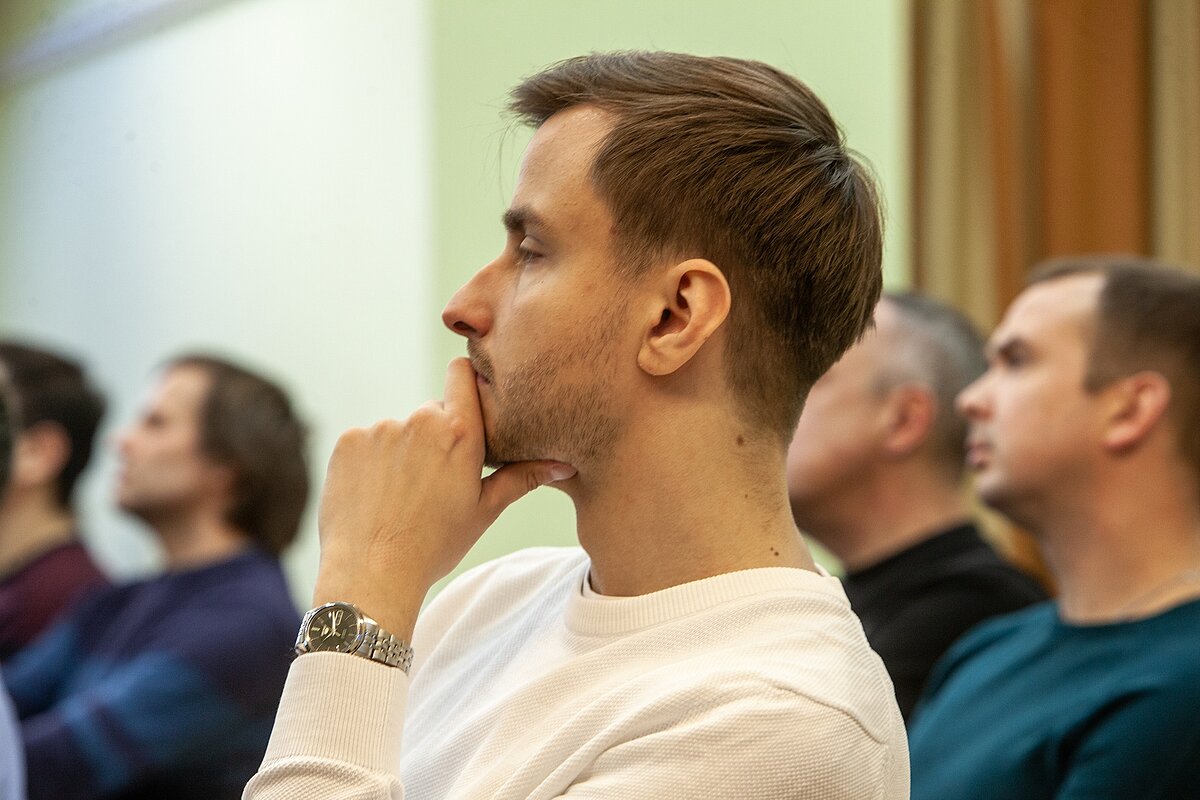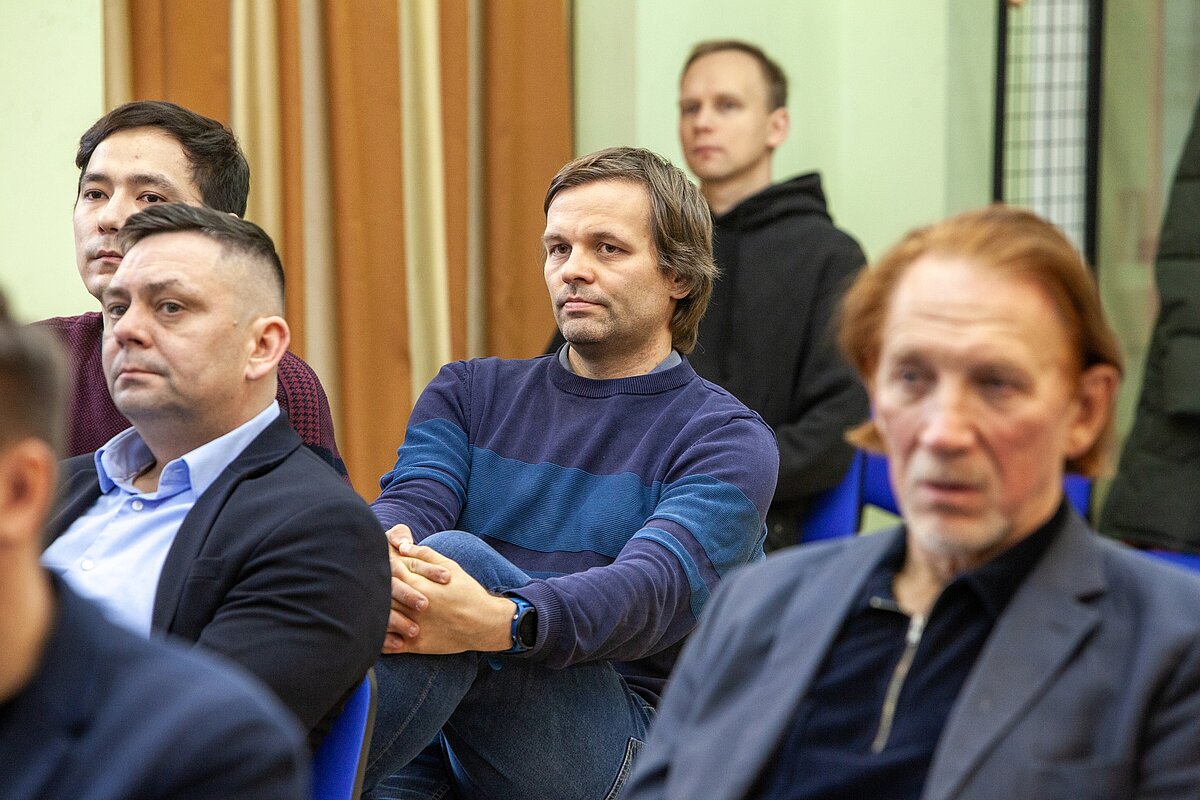
On 21 November 2025, the Institute of Solid State Physics, University of Latvia (ISSP UL), opened its doors to a new circle of Latvian industrial stakeholders, welcoming them to the SWEB Industry Day 2025. Unlike previous years, this gathering focused on companies beyond SWEB’s established collaboration network (firms from architecture, construction, coatings, materials processing, and applied photonics) whose needs and ambitions increasingly intersect with the scientific advancements taking place at ISSP UL.
The day unfolded not as a traditional conference, but as a story of connection, where research excellence met industrial curiosity, and where Latvia’s deep-tech aspirations grew visibly stronger.
The morning opened with a welcome from ISSP UL Director Andris Anspoks, setting a tone of openness and strategic partnership. He reminded participants that ISSP UL’s mission has always been rooted in serving society through fundamental discoveries, and through technologies that strengthen Latvia’s innovation ecosystem.
This message seamlessly transitioned into introduction of the SWEB project, describing its goals, its international network, and the opportunities it creates for industry engagement. From there, the program widened into the national deep-tech horizon: Ģirts Ozoliņš presented the BioPhoT platform, a new backbone for photonics-enabled innovation in Latvia, giving companies a glimpse of the national infrastructure now forming around advanced materials.
The scientific narrative deepened with contributions from ISSP researchers. Prof. Juris Purāns mapped out the complex history of photochromic and thermochromic coatings, their scientific challenges, their industrial promise, and why their development requires patient, methodical research. ERA Chair Prof. Smagul Karazhanov then connected this research to the global context, highlighting international manufacturer networks, cooperation formats, and business opportunities that Latvian companies can tap into with SWEB’s support.
Industry representatives listened closely as Dmitrijs Ščegoļevs delivered a data-driven overview of the EU flat glass market and its 2026–2030 trends, offering a clearer picture of where demand is heading. Rounding out the morning, Dr. Mārtiņš Zubkins presented ISSP UL’s latest advances in photochromic materials, demonstrating how research in Latvia is already aligned with the emerging needs of the European smart glazing sector.
After lunch, the event shifted from materials to applications. Architect and researcher Dr. Artūrs Lapiņš spoke about the delicate balance between preserving historic windows and achieving modern energy efficiency, showing how science can empower cultural heritage rather than complicate it. Further talks by SWEB WP3 leader and head of the Additive manufacturing group at the ISSP UL Dr. Boriss Poļakovs and Dr. Lauris Dimitročenko, who refurbished and enhanced the R2R machine, expanded this narrative into thermochromic coatings, additive printing, and MoCVD
The final part of the day brought participants into the Thin Films Laboratory itself. Guided by ISSP UL TFL leading researcher Dr. Zubkins, visitors witnessed magnetron sputtering in action, seeing firsthand how functional thin films are generated with atomic precision. The culmination was a tour of ISSP UL’s new Roll-to-Roll (R2R) machine, presented by Lauris Dimitročenko, an installation that is already transforming Latvia’s ability to prototype coatings at a near-industrial scale. The technology demonstrations sparked discussions about practical applications: architectural glass, polymer films, sensors, automotive components, flexible electronics, and advanced photonic devices. Many companies expressed interest in pilot projects, custom coating development, and participation in international consortia.
The 2025 Industry Day clearly demonstrated how the SWEB project is fulfilling its wider mission by strengthening the connection between scientific research and Latvia’s industrial community. By engaging companies that had not previously interacted with chromogenic technologies, the event expanded the national network of stakeholders who can benefit from SWEB’s scientific advancements.
Presentations on scientific progress and emerging market tendencies helped raise the visibility of smart window research and encouraged broader recognition of its potential for energy efficiency and sustainability in line with European climate goals. The discussions on national support instruments such as ERDF and BioPhoT highlighted SWEB’s role in guiding companies toward concrete opportunities for innovation funding, while the introduction of the new Roll to Roll machine showcased how the project is increasing its readiness for larger scale technology transfer and collaborative development.
Looking ahead, SWEB announced its plan to open a Smart Windows Demo Room in 2026. This space will allow companies, architects, policymakers, and educators to experience advanced chromogenic technologies firsthand, compare different smart glass prototypes, and observe switching behaviour, efficiency performance, and stability under real conditions. It will also provide an opportunity to explore integration with digital building systems and visualize how smart windows can support both modern and historic architecture. Serving as a platform for teaching, demonstration, and industry co creation, the Demo Room will become a central feature of the next Industry Day and further reinforce SWEB’s role in enabling deep tech growth in Latvia. By combining collaboration, funding pathways, technological demonstrations, and new infrastructure, SWEB continues to pave the way for a national environment where innovative companies can thrive within Europe’s green and digital transformation.
